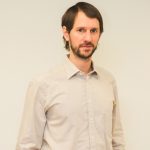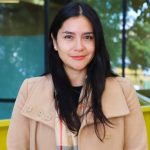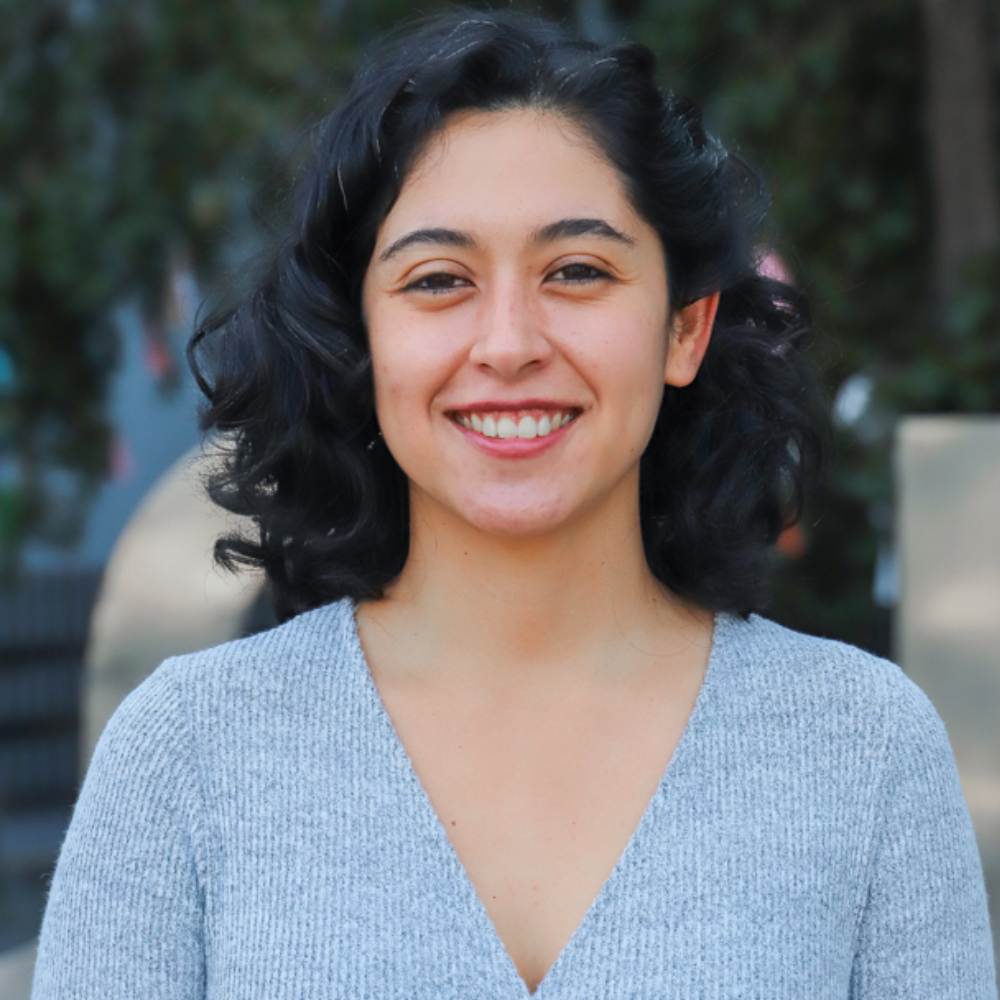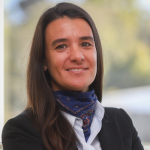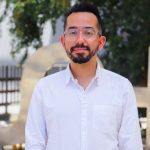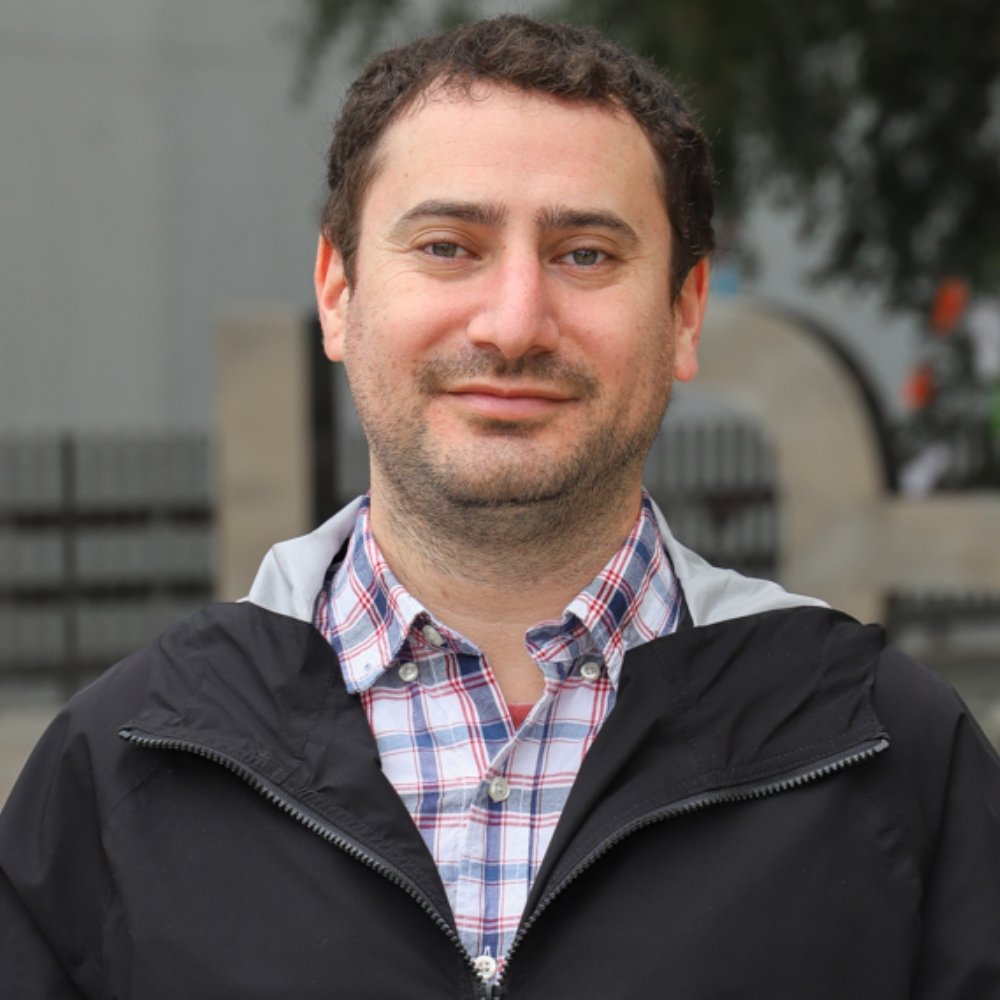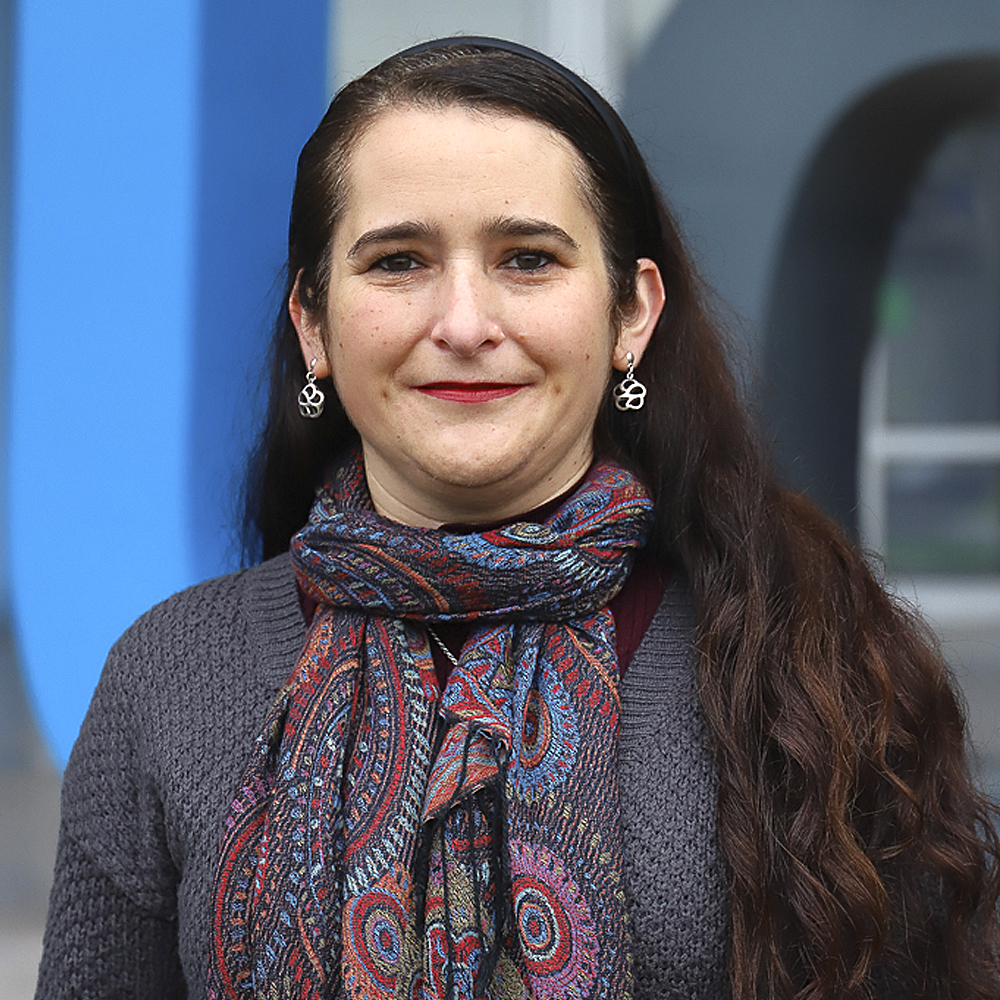Proyectos
- FIC400590730
- Abril 2024 - Marzo 2027
En EjecuciónGobierno Regional - GORE
FIC-Editorial cooperativa para la publicación de materiales educativos lúdicos, de base científica y carácter inclusivo
[vc_section el_class="container mx-auto align-items-center circle--pattern" css=".vc_custom_1648956589196{padding-top: 3rem !important;}"][vc_row el_class="pb-5"][vc_column][vc_wp_custommenu nav_menu="6"][uoh_breadcrumb_component automatic_breadcrumb="true"][uoh_title_component title_dropdown="big" title_decorator="true"]{{title}}[/uoh_title_component][vc_column_text css=""]Objetivo general: Instalar una editorial cooperativa en la región de OHiggins sustentada a partir de la comercialización de productos y servicios educativos desarrollados en base a evidencia científica, que permitan implementar el aprendizaje basado en juegos y que consideran la diversidad del aula. Esta propuesta incluye la instalación de un laboratorio de prototipado y producción, además del desarrollo de un paquete de productos y servicios educativos cuya comercialización permite sustentar la editorial cooperativa.
5.4.1. Objetivo Específico 1 (Editorial Cooperativa)
Coordinar una red de emprendedores del área educativa para establecer una editorial cooperativa para la Región de OHiggins para desarrollar y comercializar productos y servicios educativos lúdicos, de base científica y carácter inclusivo. Funciona bajo un modelo de cooperativa cuyos miembros son emprendedores localizados en la región de OHiggins con interés en innovación educativa, trabajando bajo el principio de ayuda mutua.
5.4.2. Objetivo Específico 2 (Diagnóstico de Productos)
Diagnosticar las necesidades de productos y servicios educativos para promover la calidad de los aprendizajes en los primeros cursos de educación básica en la región de OHiggins. Identifica tópicos en matemáticas y lenguaje que presentan dificultades al momento de su enseñanza, describe la diversidad de estudiantes en escuelas municipales e indaga métodos de comercialización comunes.
5.4.3. Objetivo Específico 3 (Laboratorio de prototipado y Manufactura)
Instalar en la Universidad de OHiggins un laboratorio para elaborar prototipos de juegos de mesa educativos y producirlos en pequeña escala. Se adquiere maquinaria, equipamientos e insumos necesarios para que el Laboratorio de Aprendizaje Matemático (LAM) pueda prototipar juegos de mesa y, en conjunto con la Fábrica Digital OHiggins (FabLab), producirlos con alta calidad y en pequeña escala de manera eficiente (30-100 ejemplares).
5.4.4. Objetivo Específico 4 (Desarrollo de Productos)
Realizar el diseño, prototipado y manufactura de un paquete de productos educativos para fortalecer las áreas de matemática y lenguaje en los primeros años de educación básica. Diseñados en base a ciencias del aprendizaje, estos productos permiten desarrollar aprendizajes en base a juegos y actividades lúdicas considerando la diversidad de estudiantes en el aula.
5.4.5. Objetivo Específico 5 (Capacitación y Servicios)
Generar un programa de capacitación para certificar a los emprendedores educativos para que provean servicios que acompañan a los productos educativos ofrecidos por la editorial. Este programa certifica que el emprendedor es experto en la aplicación de los productos educativos desarrollados. Este certificado habilita a los miembros de la editorial para ofrecer estos servicios en el mercado educativo.[/vc_column_text][/vc_column][/vc_row][/vc_section][vc_section css=".vc_custom_1649209804184{background-color: #f6faff !important;}" el_class="p-md-0 pt-md-5"][vc_row el_class="container mx-auto align-items-center p-md-0 pt-5"][vc_column el_class="p-0"][/vc_column][/vc_row][/vc_section][vc_section css=".vc_custom_1649210787516{background-color: #f6faff !important;}" el_class="p-md-0 pt-md-5 pb-md-5"][vc_row el_class="container mx-auto align-items-center"][vc_column][/vc_column][/vc_row][/vc_section]
Co-Investigador/a
- 1240579
- Abril 2024 - Marzo 2028
En EjecuciónAgencia Nacional de Investigación y Desarrollo - ANID
Exploring and elucidating the interplays between dissolved organic matter and microbial communities along an aquatic continuum: from the Andes to the ocean
[vc_section el_class="container mx-auto align-items-center circle--pattern" css=".vc_custom_1648956589196{padding-top: 3rem !important;}"][vc_row el_class="pb-5"][vc_column][vc_wp_custommenu nav_menu="6"][uoh_breadcrumb_component automatic_breadcrumb="true"][uoh_title_component title_dropdown="big" title_decorator="true"]{{title}}[/uoh_title_component][vc_column_text css=""]Exploring and elucidating the interplays between dissolved organic matter and microbial communities along an aquatic continuum: from the Andes to the ocean[/vc_column_text][/vc_column][/vc_row][/vc_section][vc_section css=".vc_custom_1649209804184{background-color: #f6faff !important;}" el_class="p-md-0 pt-md-5"][vc_row el_class="container mx-auto align-items-center p-md-0 pt-5"][vc_column el_class="p-0"][/vc_column][/vc_row][/vc_section][vc_section css=".vc_custom_1649210787516{background-color: #f6faff !important;}" el_class="p-md-0 pt-md-5 pb-md-5"][vc_row el_class="container mx-auto align-items-center"][vc_column][/vc_column][/vc_row][/vc_section]
Investigador/a Responsable
- FOVI240178
- Abril 2024 - Marzo 2027
AdjudicadoAgencia Nacional de Investigación y Desarrollo - ANID
A Biopsychosocial Approach for Frailty Intervention: Uncovering a Circulating microRNA Biomarker Panel Using an Omics-Based Machine Learning Approach
[vc_section el_class="container mx-auto align-items-center circle--pattern" css=".vc_custom_1648956589196{padding-top: 3rem !important;}"][vc_row el_class="pb-5"][vc_column][vc_wp_custommenu nav_menu="6"][uoh_breadcrumb_component automatic_breadcrumb="true"][uoh_title_component title_dropdown="big" title_decorator="true"]{{title}}[/uoh_title_component][vc_column_text css=""]Frailty is increasingly becoming an important public health challenge worldwide because it is associated with older age, and with adverse outcomes such as reduced quality of life, increased mortality rates, hospitalizations, falls, depression, and dementia. Frailty is defined as dynamic state affecting an individual who experiences losses in one or more domains of human functioning (physical, psychological, social) that are caused by the influence of a range of variables, and which increases the risk of adverse outcomes. This more integral conceptual definition promotes the collaboration of scientists, social and behavioral professionals as well as clinicians from diverse specialties. In this proposal an interdisciplinary group (Biochemistry, Geriatric, Occupational Therapist, Kinesiologist, social worker, bioengineer, statistician among others) aims to evaluate frailty in Chile with a biopsychosocial approach with the final purpose to identify and manage frailty while taking into consideration all the dimensions. Additionally, we aim to design a multidomain personalized person-base intervention for a healthy aging that can uncover a circulating microRNA biomarker panel that can allow an early-detection of frailty, leading to a new multidimensional geriatric assessment. We propose the following hypothesis: A personalized multidimensional training program reduces the frailty prevalence, increasing adherence and participation in the program among community-living older adults. This intervention will be paralleled by a distinctive miRNA profile reflecting the multiple domains of frailty, as well as improvements in diverse psychosocial traits.[/vc_column_text][/vc_column][/vc_row][/vc_section][vc_section css=".vc_custom_1649209804184{background-color: #f6faff !important;}" el_class="p-md-0 pt-md-5"][vc_row el_class="container mx-auto align-items-center p-md-0 pt-5"][vc_column el_class="p-0"][/vc_column][/vc_row][/vc_section][vc_section css=".vc_custom_1649210787516{background-color: #f6faff !important;}" el_class="p-md-0 pt-md-5 pb-md-5"][vc_row el_class="container mx-auto align-items-center"][vc_column][/vc_column][/vc_row][/vc_section]
Co-Investigador/a
- 11200561
- Abril 2024 - Marzo 2028
En EjecuciónAgencia Nacional de Investigación y Desarrollo - ANID
1241726_Discursos de odio en redes sociales: Una aproximación interdisciplinar para comprender el fenómeno y elaborar propuestas educomunicativas que fomenten la formación de nuevas ciudadanías
[vc_section el_class="container mx-auto align-items-center circle--pattern" css=".vc_custom_1648956589196{padding-top: 3rem !important;}"][vc_row el_class="pb-5"][vc_column][vc_wp_custommenu nav_menu="6"][uoh_breadcrumb_component automatic_breadcrumb="true"][uoh_title_component title_dropdown="big" title_decorator="true"]{{title}}[/uoh_title_component][vc_column_text css=""]Los tiempos actuales han facilitado nuevos medios de expresión e interacción como son las redes sociales. Estas plataformas, desde unos orígenes que bien podrían definirse como centrados en el entretenimiento, la comunicación interpersonal y la puesta en común de nuestra imagen e intereses, han pasado a convertirse en arenas de debates polarizados y nada edificantes.
En este escenario, nos parece necesario preguntarnos: ¿cómo funciona la producción y circulación cross-plataforma de discursos de odio en las redes sociales chilenas en los últimos años? Para obtener una respuesta, confiamos en que una aproximación interdisciplinar emprendida por un equipo de comunicadores, lingüistas y cientistas de datos puede proporcionar una mirada más completa y compleja sobre este problema. Nuestro objetivo general es comprender el funcionamiento cross-plataforma de los discursos de odio producidos y puestos en circulación en las redes sociales en Chile a partir de las tendencias informativas más relevantes entre 2015 y 2023. Para ello requerimos: 1) caracterizar cuantitativa y cualitativamente los tipos de discursos de odio producidos y puestos en circulación en las redes sociales en Chile a partir de las tendencias informativas más relevantes entre 2015 y 2023; 2) identificar las cuentas de origen y diseminación que hacen posible tanto la producción como la circulación cross-plataforma de los tipos de discursos de odio y sus comentarios en las redes sociales en Chile, y; 3) analizar cualitativamente las estrategias lingüísticas y semióticas usadas sistemáticamente en la producción de los tipos de discursos de odio y sus comentarios. Además, y no menos importante, proponemos diseñar un kit de recursos digitales con ejemplos y recomendaciones para fomentar estrategias de formación ciudadana que ayuden a los/as usuarios/as de estas redes sociales a leer críticamente los discursos de odio y proyectar acciones para confrontarlos o neutralizarlos. Si bien esta es una acción de divulgación científica, nos parece necesario dar un pequeño paso que proyecte incluso futuras investigaciones aplicadas.[/vc_column_text][/vc_column][/vc_row][/vc_section][vc_section css=".vc_custom_1649209804184{background-color: #f6faff !important;}" el_class="p-md-0 pt-md-5"][vc_row el_class="container mx-auto align-items-center p-md-0 pt-5"][vc_column el_class="p-0"][/vc_column][/vc_row][/vc_section][vc_section css=".vc_custom_1649210787516{background-color: #f6faff !important;}" el_class="p-md-0 pt-md-5 pb-md-5"][vc_row el_class="container mx-auto align-items-center"][vc_column][/vc_column][/vc_row][/vc_section]
Co-Investigador/a
- 11240512
- Marzo 2024 - Marzo 2027
AdjudicadoAgencia Nacional de Investigación y Desarrollo - ANID
Chilean Honey Hydrogel: a novel antimicrobial against staphylococcus pseudintermedius and wound healing biomaterial
[vc_section el_class="container mx-auto align-items-center circle--pattern" css=".vc_custom_1648956589196{padding-top: 3rem !important;}"][vc_row el_class="pb-5"][vc_column][vc_wp_custommenu nav_menu="6"][uoh_breadcrumb_component automatic_breadcrumb="true"][uoh_title_component title_dropdown="big" title_decorator="true"]{{title}}[/uoh_title_component][vc_column_text css=""]Se propone estudiar la miel orgánica monofloral de Quillay (Quillaja saponaria Molina), que es un árbol endémico de Chile central. La miel de Quillay es reconocida por sus características organolépticas y efectos biológicos, comparables a mieles como la miel de manuka. Esta miel junto con el quitosano y la gelatina se utilizarán para elaborar los hidrogeles. La CHH se esterilizará mediante radiación gamma para obtener miel de grado médico. A continuación, se estudiará la caracterización fisicoquímica de la CHH y su efecto in vitro e in vivo. La caracterización se llevará a cabo mediante la determinación de diferentes parámetros fisicoquímicos y por cromatografía líquida de ultra alto rendimiento-espectrometría de masas. También se determinará la capacidad antioxidante de la CHH. Tras esta caracterización química, se evaluará in vitro el perfil de eficacia y seguridad de la miel. Para ello, se medirá el efecto de la CHH sobre macrófagos, fibroblastos y S. pseudintermedius. Por último, se comprobará el efecto in vivo de esta formulación sobre la cicatrización de heridas en ratones. Para ello, se realizará un ensayo de cicatrización de heridas, junto con el análisis histopatológico de biopsias de heridas y la determinación de parámetros hematológicos, para evaluar los cambios locales y sistémicos en los animales objeto de estudio. Con este proyecto, esperamos verificar y obtener nueva información sobre la capacidad de cicatrización de la miel chilena aplicada en hidrogeles en heridas infectadas por S. pseudintermedius. Esto permitirá contar con más herramientas para tratar eficientemente este tipo de patologías en medicina veterinaria.[/vc_column_text][/vc_column][/vc_row][/vc_section][vc_section css=".vc_custom_1649209804184{background-color: #f6faff !important;}" el_class="p-md-0 pt-md-5"][vc_row el_class="container mx-auto align-items-center p-md-0 pt-5"][vc_column el_class="p-0"][/vc_column][/vc_row][/vc_section][vc_section css=".vc_custom_1649210787516{background-color: #f6faff !important;}" el_class="p-md-0 pt-md-5 pb-md-5"][vc_row el_class="container mx-auto align-items-center"][vc_column][/vc_column][/vc_row][/vc_section]
Co-Investigador/a
- 3170706
- Marzo 2024 - Marzo 2027
En EjecuciónAgencia Nacional de Investigación y Desarrollo - ANID
Desarrollo desigual y la política del riesgo de desastres: Hacia una resiliencia justa en el Chile post-estallido
[vc_section el_class="container mx-auto align-items-center circle--pattern" css=".vc_custom_1648956589196{padding-top: 3rem !important;}"][vc_row el_class="pb-5"][vc_column][vc_wp_custommenu nav_menu="6"][uoh_breadcrumb_component automatic_breadcrumb="true"][uoh_title_component title_dropdown="big" title_decorator="true"]{{title}}[/uoh_title_component][vc_column_text css=""]Esta investigación se enmarca en discusiones del campo interdisciplinario de los estudios de desastre, contribuyendo a la comprensión del rol de las comunidades en la gobernanza del riesgo. Estando establecido que los desastres relacionados con amenazas naturales se explican por la vulnerabilidad social, diversas agendas de desarrollo promueven políticas que prevengan futuros eventos mediante la reducción de la vulnerabilidad o el aumento de la resiliencia. A pesar de esto, diversos grupos sociales no solo son mayormente afectados por desastres según su clase, género, etnia/raza, ubicación, etc., sino además son excluidos de las instancias formales de gestión del riesgo. Los desastres en definitiva son políticos y expresan dinámicas de desarrollo desigual.
Como respuesta, habitantes de territorios en riesgo deben organizar iniciativas que permitan resistir y hacer frente a posibles desastres, incrementando su propia resiliencia. Al igual que los desastres y sus riesgos subyacentes, estas iniciativas se inscriben en el contexto social y político más amplio. Sin embargo, no sabemos cómo ciertas crisis y transformaciones sociales más amplias influyen en estas iniciativas de resiliencia. Esta investigación se centra en Chile y el fenómeno denominado estallido social. Aunque el proceso abierto por el estallido, con sus movilizaciones y discursos críticos, abría la posibilidad de un nuevo escenario político en el país, actualmente esto está en entredicho. A pesar de ello, es de suma relevancia analizar si este contexto influye en cómo se gobiernan los riesgos en territorios expuestos a amenazas naturales. Es decir, si del estallido social emergió un conjunto de demandas por mayor justicia social y ambiental, es fundamental entender si tales discursos y prácticas interactúan (o no) con iniciativas locales que potencien una resiliencia justa que promueva la igualdad y sustentabilidad territorial. Por ello, el objetivo general del proyecto es: Analizar cómo los habitantes de territorios en riesgo experimentaron el estallido social, y cómo esta experiencia influencia la organización y el funcionamiento de iniciativas colectivas de resiliencia justa.[/vc_column_text][/vc_column][/vc_row][/vc_section][vc_section css=".vc_custom_1649209804184{background-color: #f6faff !important;}" el_class="p-md-0 pt-md-5"][vc_row el_class="container mx-auto align-items-center p-md-0 pt-5"][vc_column el_class="p-0"][/vc_column][/vc_row][/vc_section][vc_section css=".vc_custom_1649210787516{background-color: #f6faff !important;}" el_class="p-md-0 pt-md-5 pb-md-5"][vc_row el_class="container mx-auto align-items-center"][vc_column][/vc_column][/vc_row][/vc_section]
Co-Investigador/a
- 11240017
- Marzo 2024 - Diciembre 2026
En EjecuciónAgencia Nacional de Investigación y Desarrollo - ANID
Role of cholesterol in brain vascular development of mouse embryos
[vc_section el_class="container mx-auto align-items-center circle--pattern" css=".vc_custom_1648956589196{padding-top: 3rem !important;}"][vc_row el_class="pb-5"][vc_column][vc_wp_custommenu nav_menu="6"][uoh_breadcrumb_component automatic_breadcrumb="true"][uoh_title_component title_dropdown="big" title_decorator="true"]{{title}}[/uoh_title_component][vc_column_text css=""]The brain is an energy intensive organ that requires a robust supply of nutrients and oxygen. The vasculature irrigating the brain is a huge and complex network of blood vessels fulfilling this requirement, while also protecting the neural tissue from blood-borne toxic substances. This regulated nutrient supply is accomplished by the formation of a highly selective molecular barrier, termed the blood-brain barrier (BBB). Dysfunction of the BBB or malformations of the vascular network are associated with pathological conditions that impair brain function, and can lead to death. Thus, appropriate morphogenesis and establishment of the brain vasculature is necessary for a healthy life.
The brain vasculature forms during intrauterine development, matching brain growth in this same period. Anatomically, blood vessels grow first surrounding the brain primordium and then penetrate the parenchyma until they vascularize the periventricular zone. The molecular regulation of this patterned growth is not completely understood. Several signaling pathways are known to be involved in brain angiogenesis, including WNT, TGF-β, Hh, and NOTCH, which differentially regulate vascular growth. Recently, cholesterol has been shown to modulate angiogenic growth in other vascular beds by regulating the activity of the NOTCH pathway, suggesting that cholesterol levels could influence developmental angiogenesis in the brain. Interestingly, cholesterol is also required for signal transduction of the Hh pathway. In preliminary in vitro experiments, we have observed that brain endothelial cells activate an angiogenic program after cholesterol depletion. Here, we will extend those studies to in vivo models to determine the role of cholesterol in developmental brain angiogenesis. We propose that an increase in vascular cell cholesterol activates NOTCH and attenuates Hh signaling pathways, restricting sprouting angiogenesis and blood-brain barrier formation in mouse embryo brain vasculature.
To test this hypothesis, we will study mouse embryos with altered cholesterol levels by dietary, pharmacological, and genetic manipulations. We expect these manipulations to induce a reduction or an increase in cholesterol levels in the brain vasculature during embryonic development, which we will evaluate by measuring cholesterol content in isolated vascular fragments.
In all these models, we will (Specific aim 1) study vascularization in the brain during intrauterine development using immunofluorescence with specific antibodies against endothelium proteins. In addition, we will measure the levels of transcript and proteins of general key regulators of angiogenesis in isolated vascular fragments, using qPCR and Western blot. We will (Specific aim 2) also evaluate the state of the BBB in the brain vasculature of these models at a fetal stage when the barrier is already formed and functional. For this, we will use immunofluorescence to detect the presence of marker proteins of the BBB in vascular fragments, and we will measure their levels by Western blot. Further, we will test the functionality of the barrier by injecting a fluorescent tracer and evaluating its extravasation in the brain. Finally, we will (Specific aim 3) determine the activation of the NOTCH and Hh pathways in the brain vasculature of the models at the stage of maximal angiogenesis. We will use qPCR and Western blot to measure the levels of marker genes and proteins for these two pathways in vascular fragments, and Proximity Ligation In Situ Hybridization in tissue sections to evaluate the transcript levels of those markers in situ.
We expect that the different models of dietary, pharmacological, and genetic interventions will increase or reduce cholesterol levels in the brain vasculature. These changes are expected to correlate with opposing effects on angiogenesis in the brain during development (i.e. low cholesterol will increase angiogenesis, while high cholesterol will inhibit it). In the same way, we expect that distinct cholesterol levels will have opposing effects on the integrity of the BBB. These changes in angiogenesis and BBB function are expected to be associated with concomitant disruption of the NOTCH and Hh pathways.
In summary, in this proposal we aim to cover a knowledge gap regarding the role of cholesterol in the regulation of developmental angiogenesis in the brain. These experiments may uncover new mechanisms driving vascular growth and barrier establishment in the brain, which could lead to new strategies for the prevention and treatment of pathologies involving the brain vasculature.[/vc_column_text][/vc_column][/vc_row][/vc_section][vc_section css=".vc_custom_1649209804184{background-color: #f6faff !important;}" el_class="p-md-0 pt-md-5"][vc_row el_class="container mx-auto align-items-center p-md-0 pt-5"][vc_column el_class="p-0"][/vc_column][/vc_row][/vc_section][vc_section css=".vc_custom_1649210787516{background-color: #f6faff !important;}" el_class="p-md-0 pt-md-5 pb-md-5"][vc_row el_class="container mx-auto align-items-center"][vc_column][/vc_column][/vc_row][/vc_section]
Co-Investigador/a
- 11230625
- Marzo 2024 - Febrero 2026
En EjecuciónAgencia Nacional de Investigación y Desarrollo - ANID
Flow-Induced Vibration in Pipes subjected to Gas-Liquid Multiphase Flow
[vc_section el_class="container mx-auto align-items-center circle--pattern" css=".vc_custom_1648956589196{padding-top: 3rem !important;}"][vc_row el_class="pb-5"][vc_column][vc_wp_custommenu nav_menu="6"][uoh_breadcrumb_component automatic_breadcrumb="true"][uoh_title_component title_dropdown="big" title_decorator="true"]{{title}}[/uoh_title_component][vc_column_text css=""]The project covers the following topics: vibrations, multiphase flow, and pipes. All of them are strongly related to Mechanical Engineering and its applications.[/vc_column_text][/vc_column][/vc_row][/vc_section][vc_section css=".vc_custom_1649209804184{background-color: #f6faff !important;}" el_class="p-md-0 pt-md-5"][vc_row el_class="container mx-auto align-items-center p-md-0 pt-5"][vc_column el_class="p-0"][/vc_column][/vc_row][/vc_section][vc_section css=".vc_custom_1649210787516{background-color: #f6faff !important;}" el_class="p-md-0 pt-md-5 pb-md-5"][vc_row el_class="container mx-auto align-items-center"][vc_column][/vc_column][/vc_row][/vc_section]
Responsable Alterno
- (INFRADEV-3- Ref: 676564)
- Marzo 2024 - Marzo 2027
En EjecuciónAgencia Nacional de Investigación y Desarrollo - ANID
Is Easter Island (Rapa Nui) still active? Following the traces of its recent volcanism
[vc_section el_class="container mx-auto align-items-center circle--pattern" css=".vc_custom_1648956589196{padding-top: 3rem !important;}"][vc_row el_class="pb-5"][vc_column][vc_wp_custommenu nav_menu="6"][uoh_breadcrumb_component automatic_breadcrumb="true"][uoh_title_component title_dropdown="big" title_decorator="true"]{{title}}[/uoh_title_component][vc_column_text css=""]Ocean Island Volcanoes (OIVs) and seamounts are one of the most common, prominent and rapidly formed but least studied (from a geological/volcanological point of view) features on Earth. OIVs, which represent only the summit section of a much larger volcanic edifice rising up from the sea floor, are highly vulnerable to geological hazards such as volcanism, seismic activity, mass wasting (caldera formation), landslides and rockfalls, and tsunamis. Specifically, a volcanic eruption on an OIV can mainly have a substantial impact on the local population, infrastructure and economy. It is then essential understand the characteristic behaviour and the ages of the recent eruptions of the volcano to enhance the capacity to identify future geological hazard processes such as eruptions, tsunamis, etc. In other words, to forecast how a volcano will behave, it is essential to identify, map and analyse the deposits from past eruptions and determine the ages of those deposits. However, this becomes more challenging on Ocean Island Volcanoes that have not experienced recent eruptions, such as Easter Island (Chile), but which may still pose a significant risk of future eruption.
This proposal focuses on Easter Island (Rapa Nui or Isla de Pascua), an isolated southeast Pacific island with 7.750 inhabitants, that receives more than 100.000 tourists per year. This island has been catalogued as one of the 92 active volcanos of Chile by the Chilean mining and geological service, occupying the 46th position in its Volcanic Risk ranking. It was included taking into account the recent activity focused on Terevaka volcano and its peripheral vents and other factors as the population and infrastructures exposure and its high amount of visitors per year. Nevertheless, there is still a lack of robust geochronology and volcano-stratigraphy and morphometry for Easter Island, especially for these most recent eruptions. Therefore, a comprehensive study of its Holocene eruptions regarding their styles, a more accurate age determination, and a well identification of submarine volcanic centres around the island is still pending to evaluate its potential volcanic hazard.
The main aim of this project is to identify and study the most recent eruptions of Easter Island, both onshore and offshore. This will allow understanding how and when they took place in terms of volume, diverse morphometric parameters, styles and their ages which will verify if the island is still active. To identify and characterize the style of the most recent eruptions (Holocene- last 11.700 Kyr) on the island it is planned to conduct geomorphologic and morhometryc analyses of subaerial and submarine recent volcanic deposits with and integrated onshore/offshore approach. Also, volcano-stratigraphy for the most recent cones and associated deposits onshore, with special attention to those hydrovolcanic eruptions will be analysed. To determine the number of Holocene eruptions on the island, 14C (for charcoal), 40Ar/39Ar (for rocks) techniques will be used. Moreover, we will identify and date tephras of lacustrine sedimentary records of the Rano Raraku, Rano Kao lakes and the Rano Aroi peat bog related to recent eruptions.
A likely future eruption on the island or near its coasts would have negative and serious consequences; therefore, it is essential to undertake this scientific research aimed at improving the knowledge of the processes and their potential impacts. Furthermore, this study will also contribute to understanding the overall evolution of an interoceanic volcanic island whose results can be compared with other more studied OIVs in the world. In addition, this project will support undergraduate and graduate students, for whom this study will comprise most of their dissertation research, being an extraordinary opportunity for them. Moreover, this study will foster ongoing international collaboration, providing a pipeline for future student and faculty exchange, and will promote outreach educational experiences for the community, as well as more specialized seminars.[/vc_column_text][/vc_column][/vc_row][/vc_section][vc_section css=".vc_custom_1649209804184{background-color: #f6faff !important;}" el_class="p-md-0 pt-md-5"][vc_row el_class="container mx-auto align-items-center p-md-0 pt-5"][vc_column el_class="p-0"][/vc_column][/vc_row][/vc_section][vc_section css=".vc_custom_1649210787516{background-color: #f6faff !important;}" el_class="p-md-0 pt-md-5 pb-md-5"][vc_row el_class="container mx-auto align-items-center"][vc_column][/vc_column][/vc_row][/vc_section]
Co-Investigador/a
- FOVI210021
- Marzo 2024 - Junio 2023
En EjecuciónAgencia Nacional de Investigación y Desarrollo - ANID
Fostering Climate Change Resilience: Unveiling the Interplay of Soil, Grassland, Trees, and Animals in Semi-arid Chile through a Comprehensive Holistic Framework
[vc_section el_class="container mx-auto align-items-center circle--pattern" css=".vc_custom_1648956589196{padding-top: 3rem !important;}"][vc_row el_class="pb-5"][vc_column][vc_wp_custommenu nav_menu="6"][uoh_breadcrumb_component automatic_breadcrumb="true"][uoh_title_component title_dropdown="big" title_decorator="true"]{{title}}[/uoh_title_component][vc_column_text css=""]Proyecto de investigación que apunta al estudio de practicas sostenibles para el manejo de sistemas silvopastoril en el secano costero. El proyecto involucra el estudio de la materia orgánica del suelo, además de una serie de variables que pueden impactar el manejo de los agroecosistemas[/vc_column_text][/vc_column][/vc_row][/vc_section][vc_section css=".vc_custom_1649209804184{background-color: #f6faff !important;}" el_class="p-md-0 pt-md-5"][vc_row el_class="container mx-auto align-items-center p-md-0 pt-5"][vc_column el_class="p-0"][/vc_column][/vc_row][/vc_section][vc_section css=".vc_custom_1649210787516{background-color: #f6faff !important;}" el_class="p-md-0 pt-md-5 pb-md-5"][vc_row el_class="container mx-auto align-items-center"][vc_column][/vc_column][/vc_row][/vc_section]
Investigador/a Responsable
